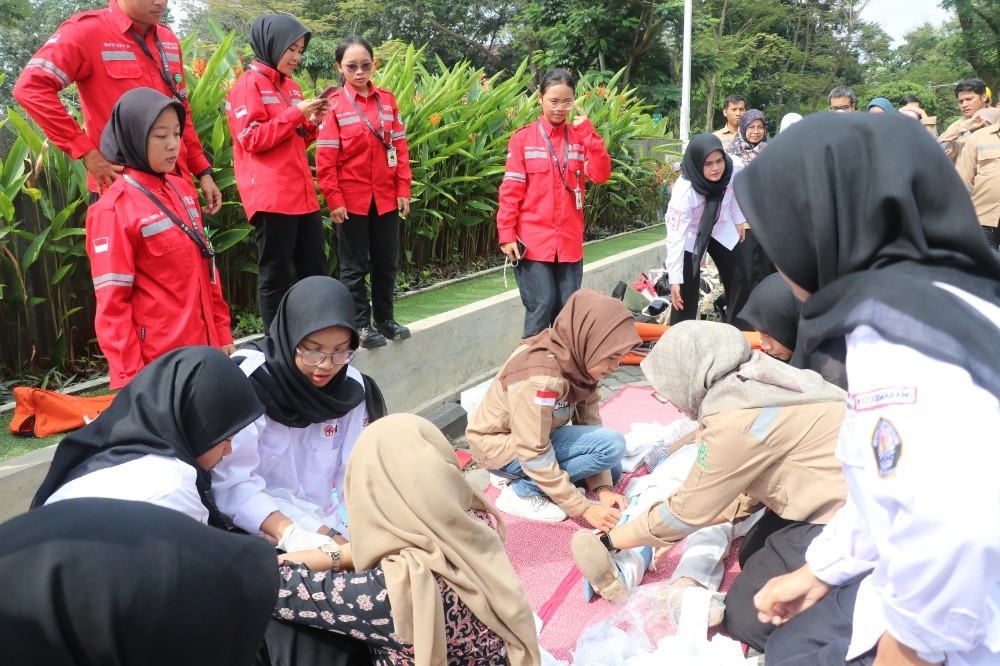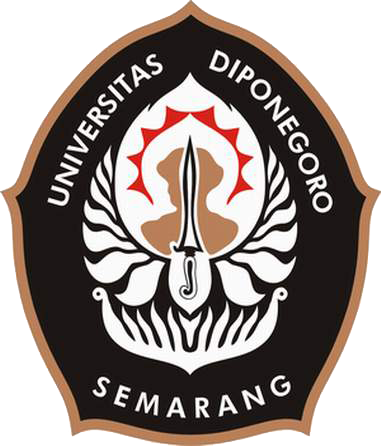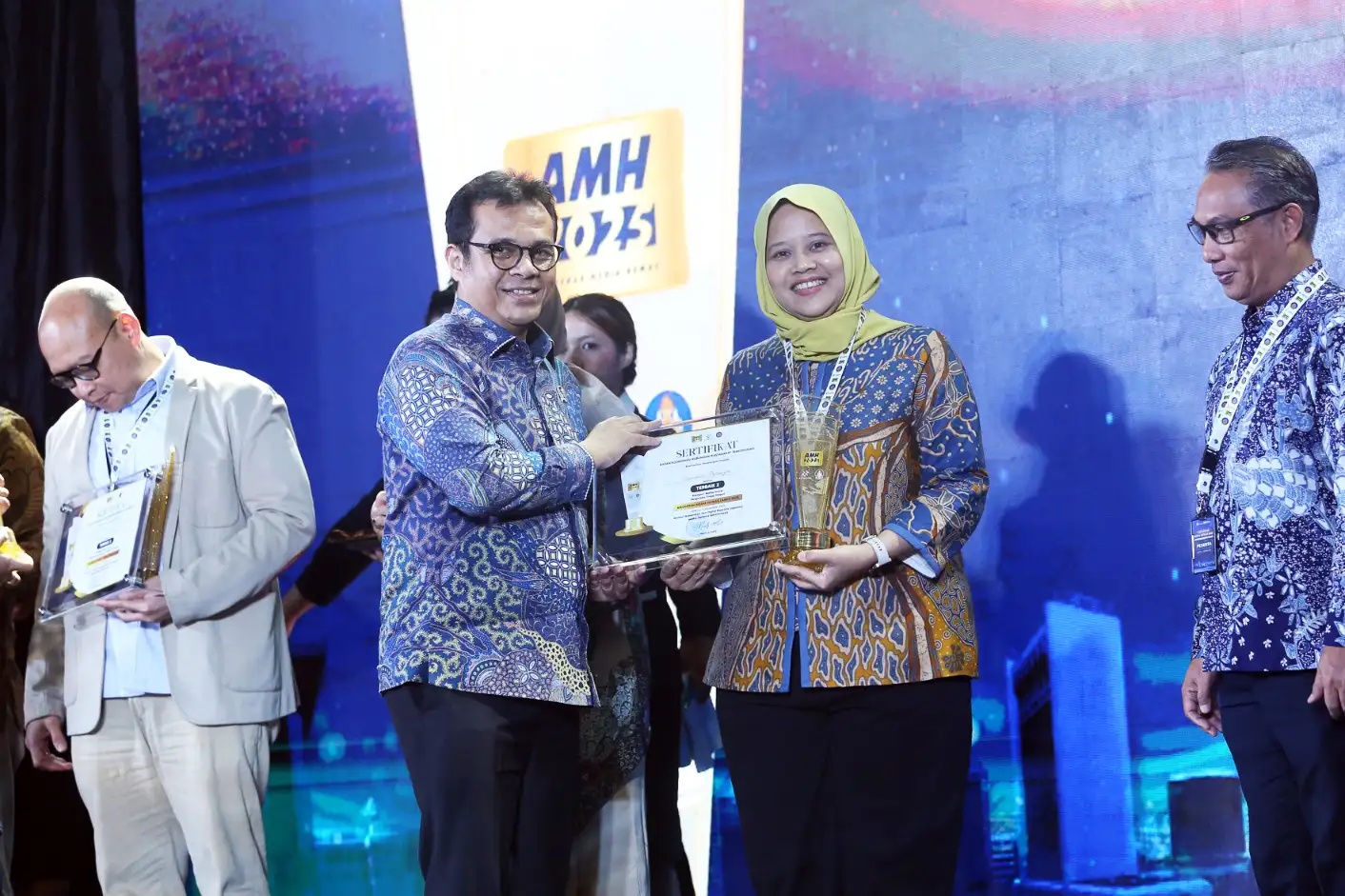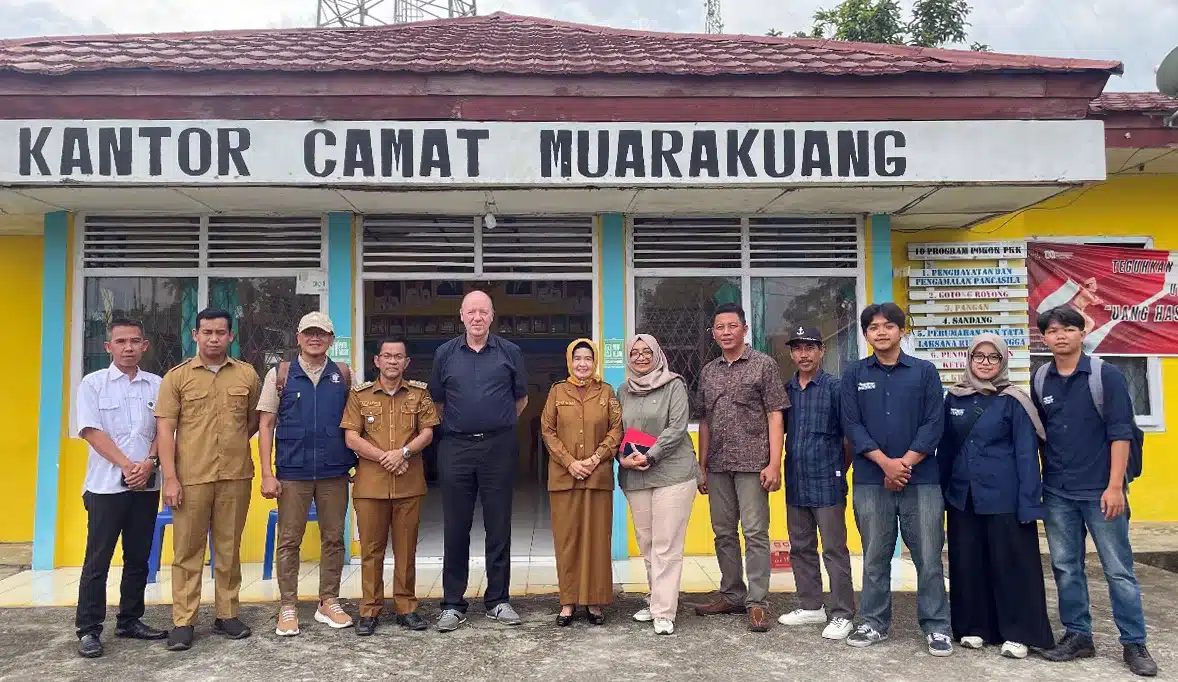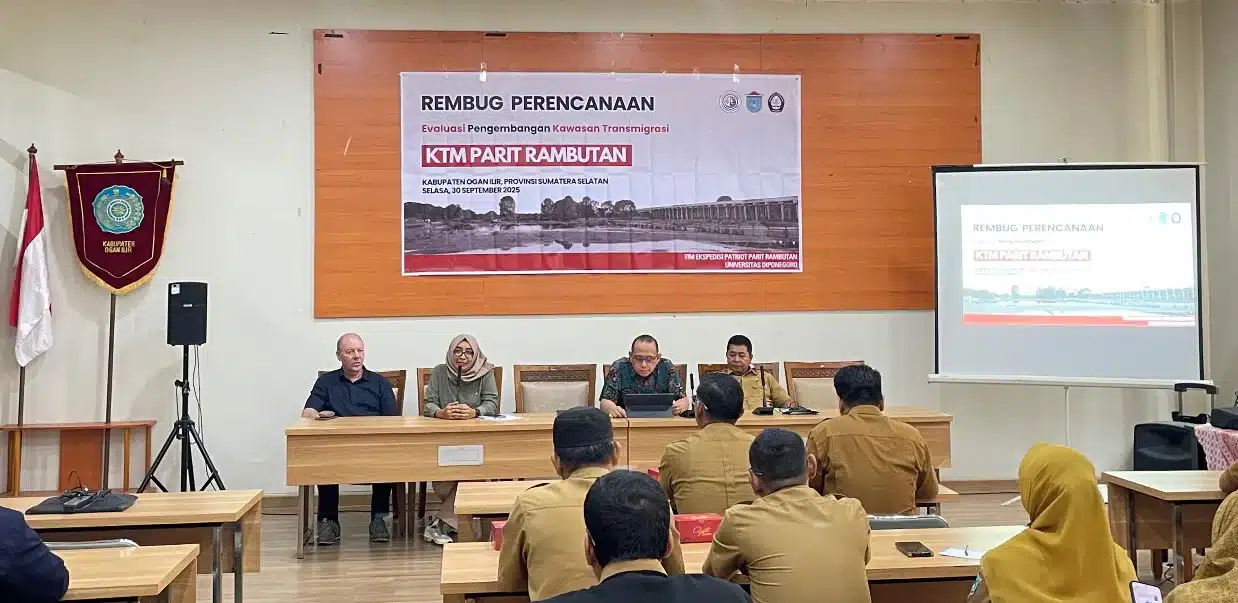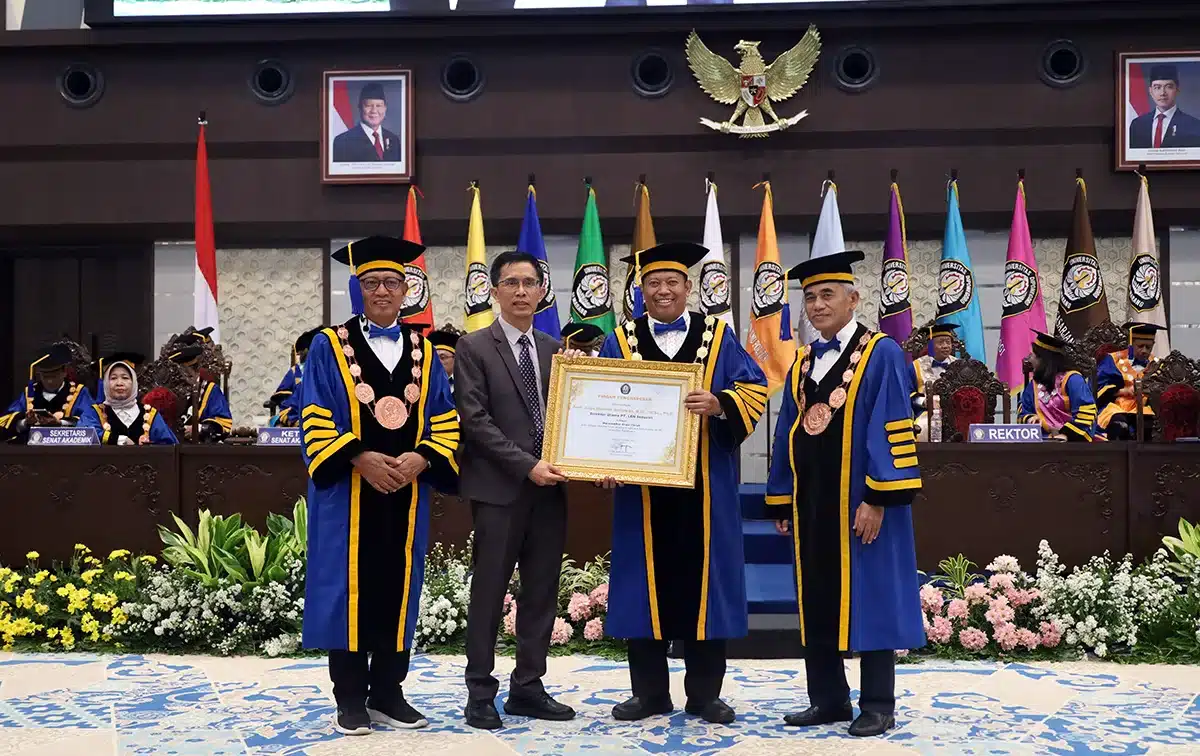UNDIP, Semarang (May 17, 2025) – As a higher education institution, Universitas Diponegoro (UNDIP) is committed not only to academic excellence but also to building a culture of safety and preparedness across campus. Through its Occupational Health, Safety, and Environmental Unit (K3L), UNDIP organized a program titled “Optimizing the Role of the Campus Community in Earthquake and Fire Disaster Preparedness” on Thursday, May 15, 2025, at the 5th Floor Auditorium, Faculty of Engineering Dean Building, UNDIP Tembalang Campus.
The event was part of the 2025 National Disaster Preparedness Day (Hari Kesiapsiagaan Bencana Nasional / HKBN) commemoration, observed annually on April 26, and involved a cross-section of the campus community—faculty members, administrative staff, students, and professionals from institutions such as the Semarang City Fire Department (DAMKAR) and the Indonesian Red Cross (PMI). The goal was to strengthen campus readiness for natural disasters, especially earthquakes and fires, through education, technical training, and integrated simulation.
The event was officially opened by Dr. Warsito Kawedar, S.E., M.Si., Akt., UNDIP’s Vice-Rector for Planning, Finance, Assets, Business, and General Affairs, who attended on behalf of the Rector. In his remarks, he expressed appreciation for the collaboration among all participating parties.
Building a disaster-aware culture is not the responsibility of one or two parties; it is a collective obligation of the entire campus community. Dr. Warsito said, “We aim to create a risk-aware campus ecosystem where every staff member, faculty, student, and security officer understands their role. Training and simulations like this are part of an ongoing practical learning process.”
Dr. Bina Kurniawan, S.KM., M.Kes., Head of UNDIP’s K3L Unit, said the initiative reflected UNDIP’s concrete steps in strengthening campus-wide disaster response capabilities. “This activity serves as a moment to unify the spirit of volunteerism, enhance cross-sector coordination, and improve the technical skills of campus members in responding to emergencies,” he said.
He added that many UNDIP employees have obtained K3 certifications in the past two years, including in firefighting, general safety, first aid, electrical safety, and laboratory safety. These certified personnel are valuable assets in realizing a “Zero Accident” campus—safe, healthy, comfortable, and productive for all.
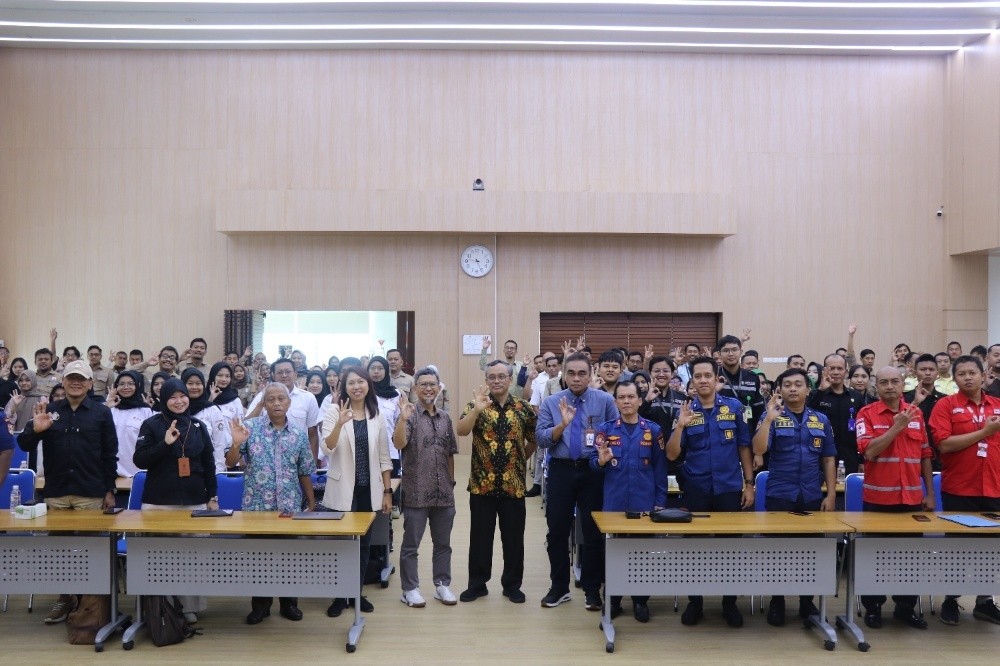
The first session featured a presentation by Prof. dr. Achmad Zulfa Juniarto, M.Si.Med., Sp.And (K), M.M.R., Ph.D., Chair of the Diponegoro Disaster Assistance Response Team (D-DART). In his talk, “Disaster Preparedness in Higher Education,” Prof. Zulfa emphasized the importance of humanitarian values in disaster readiness and encouraged synergy among UNDIP’s academic community in disaster response.
“Volunteering is not just about being present at a disaster site—it’s about the courage to care and act before disaster strikes. D-DART is not only a rapid response team but also an education and empowerment hub for campus disaster preparedness. We need lecturers, students, staff, and even external volunteers to form a strong, trained, and resilient network,” conveyed Prof. Zulfa.
The next speaker, Karnoto, S.T., M.T., presented on “Identifying Electrical Hazards and Risk Potentials (Transformers, Panels, Cubicles),” targeting certified electrical safety officers. He highlighted the crucial role of proper electrical management in preventing campus fires. “Many public facility fires start with negligence in electrical systems. Early identification and routine maintenance are key to preventing disasters caused by short circuits or overheating,” he explained.
Dr. A.A.S. Manik Mahachandra, S.T., M.Sc., followed with a session on “Workplace Inspection and Introduction to HIRADC (Hazard Identification, Risk Assessment, and Determining Control).” The session was aimed at certified general safety officers, K3 students, and members of UNDIP’s OSH Forum. He emphasized the need for everyone in a workplace environment to understand potential hazards around them.
“HIRADC is a vital tool for realizing that every activity carries risk. Without proper hazard identification, we will always be one step behind in preventing workplace accidents,” he said.
On the practical side, the Semarang City Fire Department (DAMKAR) conducted training on the use of both traditional and modern fire extinguishers. Participants included certified fire response staff, student activity units (UKM), and campus security personnel.
Additionally, the Semarang branch of the Indonesian Red Cross (PMI) delivered training on first aid during disasters in high-rise buildings, targeting certified first aid officers and members of the Volunteer Corps (KSR).
The program concluded with a comprehensive earthquake and fire simulation involving all occupants of the Faculty of Engineering Dean Building. Led by DAMKAR and PMI teams, the simulation replicated real-life conditions, from earthquake tremors and alarms to emergency evacuation and victim response. The scenario served both as an evaluation of the university’s emergency response system and as a collaborative learning moment on the importance of synergy, communication, and quick action during crises.
This initiative is a testament to UNDIP’s commitment to developing a safe, alert, and disaster-resilient campus ecosystem. Through sustained efforts, the university aspires to not only be a center for education but also a model institution in disaster risk management. (Public Communication Office/UNDIP/DHW)
